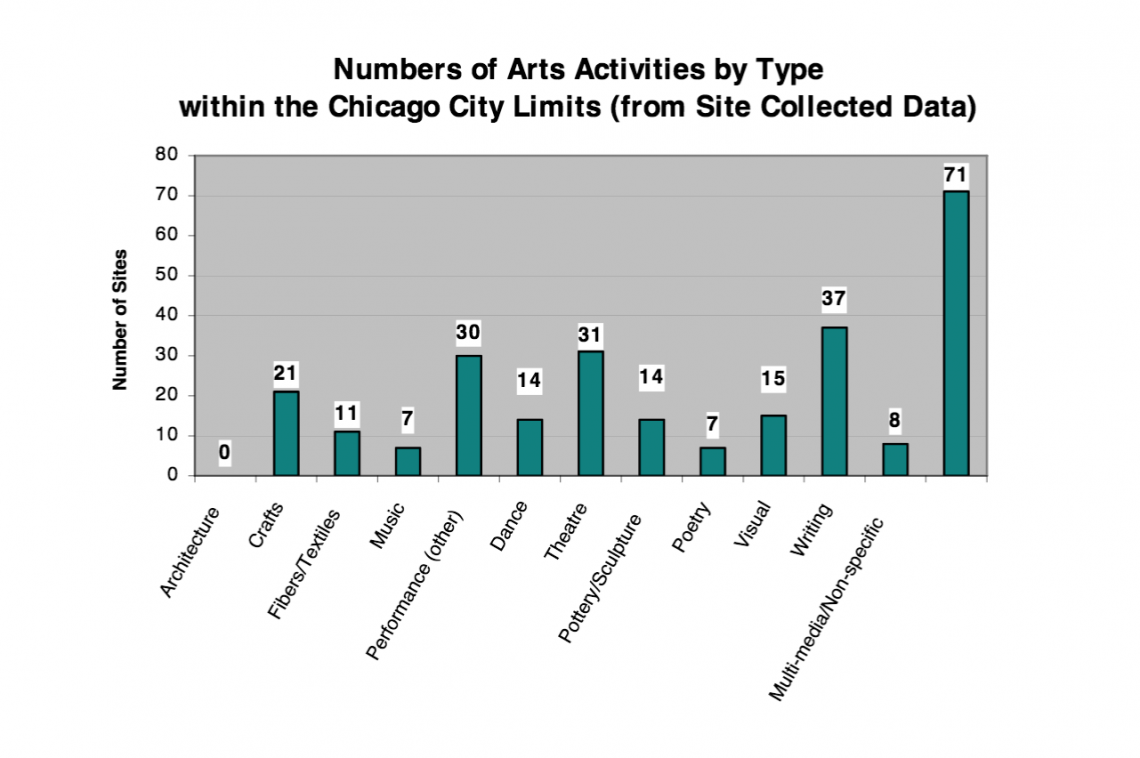
This week we’re adding a research paper to our library that is one of our most often-cited sources on the topic of social cohesion. Informal Arts: Finding Cohesion, Capacity and Other Cultural Benefits in Unexpected Places was written by Dr. Alaka Wali, Director of the Center for Cultural Understanding and Change at Chicago’s Field Museum, in collaboration with Rebecca Severson, Mario Longoni, and an extensive project team for the Chicago Center for the Arts Policy (CCAP) at Columbia College in June of 2002.
The paper was commissioned by CCAP to gather more information on the value created by adult participation in the informal arts. The project, which classified informal arts as “creative activities that fall outside traditional non-profit and commercial art experiences,” centered on three main questions:
1. What does participation in the informal arts lead to with regard to interaction across boundaries of race, ethnicity, gender, and class?
2. What kind of skills do people acquire from participation in the informal arts?
3. Is there any relationship between the formal arts and informal arts?
The team found that the informal arts succeed in bridging differences across race, ethnicity, gender, and class; and also built out individual skills and capacities that are important to civic life: “Informal arts practice provides important sites for adult personal expression and creativity. In the process, it helps to build individual and community assets, by fostering social inclinations and skills critical to civic renewal. These include greater tolerance of difference, trust and consensus building, collaborative work habits, use of innovation and creativity to solve problems, the capacity to imagine change and the willingness to work for it.”
This resource showcases how the arts offer a pathway toward an integrated society without some of the negative impacts of assimilation – the arts can simultaneously strengthen individual identity and create group solidarity. And as community members bridge and bond with one another, they drive social cohesion and, thus, more stable communities.
You can view the full paper in our library here.





